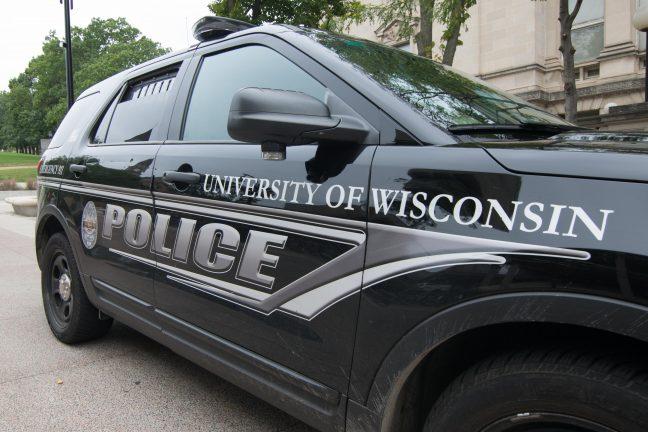While walking through the University of Wisconsin campus, the blue emergency lights — once considered an essential tool for campus safety — are scattered throughout. But campus sources have said they are becoming obsolete.
University of Wisconsin Police Department spokesperson Marc Lovicott said despite murmurs of getting rid of these devices on other campuses, UW has no plans to do so in the near future.
“The University of Madison has never considered taking away the lights, even though some universities have around the state,” Lovicott said. “Despite the expense, we know they give people a peace of mind.”
UW junior Brittney DeBoer said she had had experiences where the blue light phone could have been helpful.
DeBoer added she found them comforting during situations where she felt unsafe.
“I have actually felt unsafe on campus,” DeBoer said. “One time while walking from Memorial Union to Liz Waters [residence hall], there was a car keeping pace with me. I was by one of the blue safety lights and it was a lot more comforting. I don’t think I would have had time to fumble around with my phone if something were to happen.”
Lovicott said one major reason why universities around the country have been considering saying goodbye to the blue lights is their high costs for maintenance and upkeep.
Lovicott said a large portion of the cost comes from paying employees for the labor that goes into maintaining the phones.
“The primary cost is in wages and time spent fixing the phones,” Lovicott said. “The manpower associated with that and fixing the phones if they’re broken is expensive.”
Lovicott added most of the UW campus has converted to a Voice over Internet Protocol system within the last few years.
According to the Federal Communications Commission website, VoIP is a form of technology that lets people make phone calls using internet connection rather than old copper phone lines.
“The emergency phones are all old copper wire landline phones,” Lovicott said. “Because it’s outdated technology, we have to pay the phone company a premium price for those lines.”
Lovicott added that between 2016 and the present day, UWPD has received approximately 575 calls from the blue emergency lights, of which only three were for actual emergencies and the remainder was either prank calls or misdials.
But rather than thinking of eliminating the phones altogether, the UWPD is actually working to find a way to upgrade the emergency phones, despite the costliness of doing so.
“[The old copper wire phones] are obsolete now so we are trying to find a plan to update them and upgrade them somehow,” Lovicott said. “We are still working with various groups on campus to figure out a way to do that. There are many options we’re working through but ultimately, they are all expensive.”
Lovicott said UWPD is mainly focusing on improving the existing emergency lights and encouraging other forms of safety on campus rather than adding more emergency lights to campus.
Last year, UW student Sophie Morris started a petition that gained over 1,800 signatures during her freshman year. The petition was created to advocate for more blue lights on campus but in the end, she and UWPD collectively decided that wouldn’t be the best option in the long run.
“We met with the student who created the petition and it was an overwhelming consensus that it’s probably not a good idea to add more blue light phones because they are obsolete technology,” Lovicott said.
Lovicott said that they have been thinking about increasing the amount of lighting around campus, reintroducing SAFEride and improving their WiscGuardian app.
Lovicott said UWPD took a year off from marketing for the app so they could work with different vendors on the possibility of replacing it. The department is looking to have the improved version ready and working for the year ahead, he said.
As for actions students can take on their own, Lovicott advises they be extremely aware of their surroundings, especially at night. He recommends that students keep at least one earbud out while walking and glance up every once in a while.
“Walk in groups, walk with a friend, and stay in well-lit areas,” Lovicott said. “Use the transportation offered at the university. There are lots of options for making students feel safe and the UWPD is working on improving them even further.”


